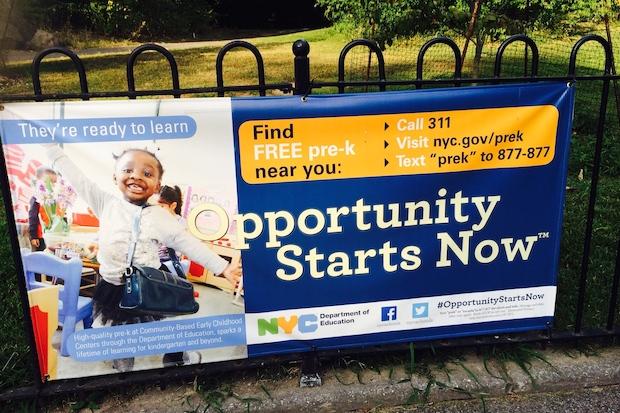Insights from Chicago’s Educational Struggles: Guidance for New York’s Policymakers
Chicago’s public school system has long been plagued by structural inefficiencies that New York’s education leaders should carefully examine to prevent similar setbacks. Chronic disparities in funding, excessive administrative layers, and a lack of innovation in classroom practices have collectively stifled student achievement in Chicago.Moreover, reform efforts, though often well-meaning, were frequently implemented without sufficient collaboration, eroding trust among educators and families and widening educational divides. For New York, the path forward involves prioritizing transparent and equitable resource distribution, investing robustly in teacher development, and fostering ongoing dialog with communities before rolling out major reforms.
Essential strategies for New York’s education reform include:
- Focused allocation of resources: Move beyond uniform budgeting to direct funds where they are most needed.
- Supporting educators: Enhance professional growth opportunities and minimize bureaucratic obstacles.
- Phased reform implementation: Introduce changes gradually with clear, measurable goals.
- Engaging communities: Build trust by actively involving parents and local stakeholders in policy decisions.
| Chicago’s Challenge | Consequences | New York’s Takeaway |
|---|---|---|
| Overly complex bureaucracy | Slowed decisions and limited teacher independence | Simplify administration and empower individual schools |
| Unequal funding distribution | Increased achievement disparities | Adopt equity-focused budgeting policies |
| Top-down reform imposition | Diminished community confidence | Ensure inclusive stakeholder participation |
Closing the Funding Gap: Enhancing Educational Equity in New York City
Funding inequality remains a significant obstacle to achieving fairness in New York’s public schools, reflecting challenges similar to those faced by Chicago. Despite New York’s substantial economic resources, many schools serving low-income communities continue to struggle with inadequate funding. This financial imbalance contributes to persistent achievement gaps, highlighting the critical need for targeted investments that guarantee all students access to modern facilities, skilled educators, and enriching extracurricular activities.
Effective approaches to mitigate funding disparities include:
- Adopting weighted student funding models that allocate resources based on student needs rather than mere enrollment numbers
- Enhancing transparency in budget processes to ensure accountability in equitable spending
- Collaborating with community groups to augment school resources and broaden student support networks
| Funding Dimension | New York Status | Chicago Comparison |
|---|---|---|
| Average Spending per Student | $23,000 | $21,000 |
| Funding Inequality Ratio (Low vs. High Income) | 1:1.5 | 1:2.0 |
| Availability of Support Services | Moderate | Limited |
Strengthening Accountability to Minimize Administrative Waste and Boost Efficiency
To tackle administrative inefficiencies head-on, New York must establish stringent accountability systems that promote transparency throughout educational governance. This includes setting clear performance indicators,conducting regular audits,and publicly sharing results to ensure that administrators are answerable for how resources are managed and policies executed. Without these safeguards, bureaucratic expansion and mismanagement-problems that have hampered Chicago’s schools-may continue unchecked.
Crucial accountability initiatives should encompass:
- Systematic evaluation of district leaders based on concrete student achievement data
- Open access to comprehensive budget reports and spending rationales
- Protection for whistleblowers to encourage ethical oversight and reporting
- Enforcement of strict consequences for mismanagement or failure to meet performance targets
| Accountability Focus | Impact on Education | Chicago’s Experience |
|---|---|---|
| Leadership Performance Metrics | Enhances administrative effectiveness and responsiveness | Largely missing,allowing unchecked practices |
| Budget Transparency | Builds trust and optimizes resource allocation | Often opaque,contributing to inefficiency |
| Whistleblower Protections | Fosters internal accountability and ethical conduct | Insufficient,enabling misconduct to persist |
Fostering Community Participation and Expanding School Choice for Enduring Educational Reform
Meaningful educational reform extends beyond directives from above; it thrives on active engagement of parents,educators,and community leaders. Chicago’s experience demonstrates that sidelining community input can deepen skepticism and stall progress. To circumvent these issues, New York should cultivate accessible platforms-such as neighborhood forums, advisory boards, and pilot initiatives-that invite diverse voices into the policymaking process.This inclusive approach ensures that reforms resonate with local needs, fostering a sense of shared responsibility and sustained commitment.
School choice plays a vital role in empowering families and stimulating educational excellence. Unlike Chicago’s uniform system, New York has the opportunity to broaden access to a variety of high-quality options, including charter schools and specialized public programs. This diverse ecosystem enables parents to select educational environments tailored to their children’s unique learning preferences and goals, thereby raising standards across the city.However, choice must be balanced with stringent oversight to guarantee fairness, transparency, and consistent evaluation. The table below outlines key components for harmonizing choice with community interests:
| Component | Objective | Effect on Community |
|---|---|---|
| Inclusive Governance | Engage all stakeholders in decision-making | Builds trust and accountability |
| Transparent Admissions | Ensure equitable access to educational options | Promotes fairness and diversity |
| Ongoing Performance Monitoring | Maintain high standards and continuous enhancement | Supports sustained quality and equity |
Final Thoughts on Educational Reform in New York
As New York shapes the trajectory of its public education system, the cautionary experiences of Chicago offer invaluable guidance. Steering clear of similar errors demands deliberate policymaking, transparent leadership, and an unwavering dedication to equity that centers on student success.The challenges are formidable, but with intentional reforms and consistent investment, New York can create an educational surroundings where every child has the opportunity to thrive and excel.





